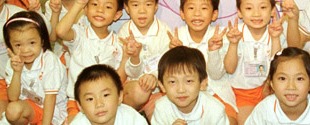FAQs on Choosing a Kindergarten
-
Q1.How can I choose a quality kindergarten?Ans
You can have a better understanding of the mission, philosophy of education, teacher qualifications as well as the fees and charges of a kindergarten through the kindergarten's website, pamphlet as well as the profile of the kindergarten on the Education Bureau (EDB) website. You can also visit the school and talk with the teaching staff to get a better picture of the school. EDB has conducted Quality Assurance Inspection and Quality Review visits to some kindergartens. You can view the reports on EDB website for reference.
A quality kindergarten should have the following characteristics:

- operating in safe and hygienic premises
- offering a stimulating learning environment
- providing ample and diversified facilities
- employing professionally trained teachers who are visionary, approachable, patient and caring
- implementing a balanced curriculum
- organising diversified learning activities
- placing emphasis on developing positive learning attitudes, good character and healthy living habits of children
Profile of Kindergartens and Kindergarten-cum-Childcare Centres
Quality Review Reports
-
Q2.What are the differences between kindergartens and child care centres?Ans
Both kindergartens and child care centres provide pre-primary education and care for children under 6. EDB regulates kindergartens for children aged 3 or above, while child care centres for children aged under 3 are regulated by the Social Welfare Department. At present, most of the kindergartens operate on a half-day basis, and offer Nursery classes, Lower and Upper Kindergarten classes for children from 3 to 6. The other few provide whole day classes. While aided child care centres provide full day care services for children under 3, other child care centres also provide half-day services. From September 2005 onwards, kindergartens and child care centres can be operated in the same premises for children aged 0 to 6, called kindergarten-cum-child care centres (KG-cum-CCCs). KG-cum-CCCs that are previously aided centres of the Social Welfare Department provide full day care and education services for children under 6.
-
Q3.Are kindergartens adopting activity approach better than those adopting traditional approach?Ans
Activity approach enables children to learn in a happy and relaxing environment through participation in various interesting play and activities. Traditional approach, on the other hand, is teacher-centred and is focused on transmitting knowledge. In comparison, activity approach can better meet the physical and psychological needs of children.
-
Q4.Which kindergartens can guarantee their school leavers automatic admission to the primary school?Ans
As all kindergartens in Hong Kong are privately run, none of them can guarantee their students automatic admission to a particular government or aided primary school. The existing Primary One Admission (POA) System is designed to eliminate the intense competition to enter popular primary schools and to reduce the pressure on young children.
More on Primary One Admission System

Private primary schools, Direct Subsidy Scheme (DSS) schools and primary schools of the English Schools Foundation are excluded from the System. Parents may apply direct to these schools. Under normal circumstances, school leavers of a kindergarten affiliated to a private primary school are more likely to be admitted to that primary school.
-
Q5.Is the quality of international kindergartens better than that of local kindergartens?Ans
International kindergartens are kindergartens intended for non-Chinese speaking children. The difference between international and local kindergartens mainly lies on the medium of instruction, with the former adopting languages other than Chinese, such as English and Japanese. Parents should compare and assess the quality of these two types of kindergartens by looking at their mission, curriculum, learning environment, facilities and teacher qualifications, rather than merely on the medium of instruction.
-
Q6.At what age are children suitable for entry to the kindergarten?Ans
Normally, children at the age of 3 are ready for kindergarten education. However, in response to the preference of many parents for matching the age of children entering kindergarten and their age of entering primary school, the minimum age for children entering kindergarten in September has been relaxed to 2 years 8 months.
-
Q7.What should we do to prepare our children for the school admission interview?Ans
An ideal kindergarten should allow children, through appropriate activities and everyday experiences, to achieve a balanced development in a pleasurable environment. Based on this principle, all admission interviews should be conducted in the form of activity to eliminate the pressure on children. Being the entry point of children’s learning, a kindergarten should not require children to possess any prior knowledge. Instead of drilling their young children for admission interviews, parents are advised to give more opportunities for them to play and communicate with other people. It will be sufficient if children feel at ease in front of strangers and are willing to communicate with other people.
-
Q8.Which districts have more quality kindergartens?Ans
Quality kindergartens can be found in all districts. When making a choice, parents should consider those kindergartens located in their vicinity so that their children need not take a long journey to attend school.
-
Q9.How can I choose a kindergarten offering "biliterate and trilingual" learning?Ans
"Biliterate" means written Chinese and English, while "trilingual" means Cantonese, spoken English and Putonghua. During early childhood, developing proficiency in the mother-tongue is of primary importance. Since the mother tongue of most children in Hong Kong is Cantonese, it is desirable to adopt Cantonese as the medium of instruction for pre-primary education to facilitate communication and enhance the learning effectiveness of children.
At present, a majority of kindergartens in Hong Kong provide children with various forms of learning activities in English and Putonghua. To allow children learning in a pleasurable environment without any undue pressure, these language activities should meet the psychological and intellectual development of children and relate to real-life situations.
-
Q10.Will those kindergartens adopting innovative teaching methods guarantee quality education?Ans
Each approach has its own characteristics and underlying rationale. To assess the quality of education of a school, the fundamental requirement is whether the kindergarten can achieve the aim of enabling children to have a balanced development in a happy environment through appropriate activities and everyday experiences. The teaching method adopted by a kindergarten only constitutes part of the quality teaching. Other factors, such as the quality of teachers and resources available, should be considered. Understanding of the characteristics and operation of a kindergarten from various perspectives will enable parents to make the right choice.
Related Content
- Search for Profile of Kindergartens and Kindergarten-cum-Child Care Centres
- Search for Primary School Profiles
- Search for Secondary School Profiles
- Search for Special School Profiles (Available in Chinese only)
- Access SFO E-link – My Applications to Submit Online Applications
- Access SFO E-link – My Bills to View Student Loan Account & Make Payment
- More Top Online Services >